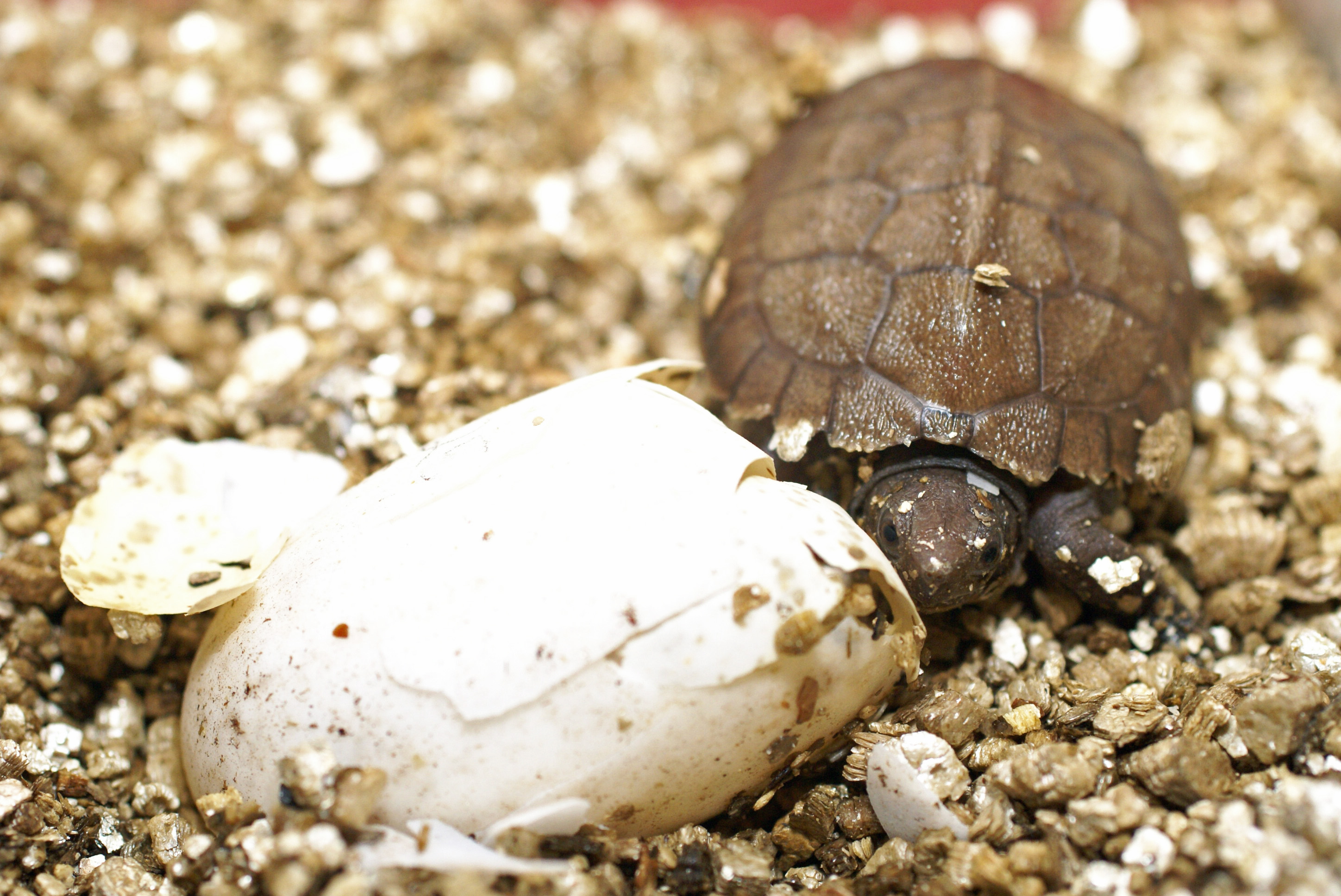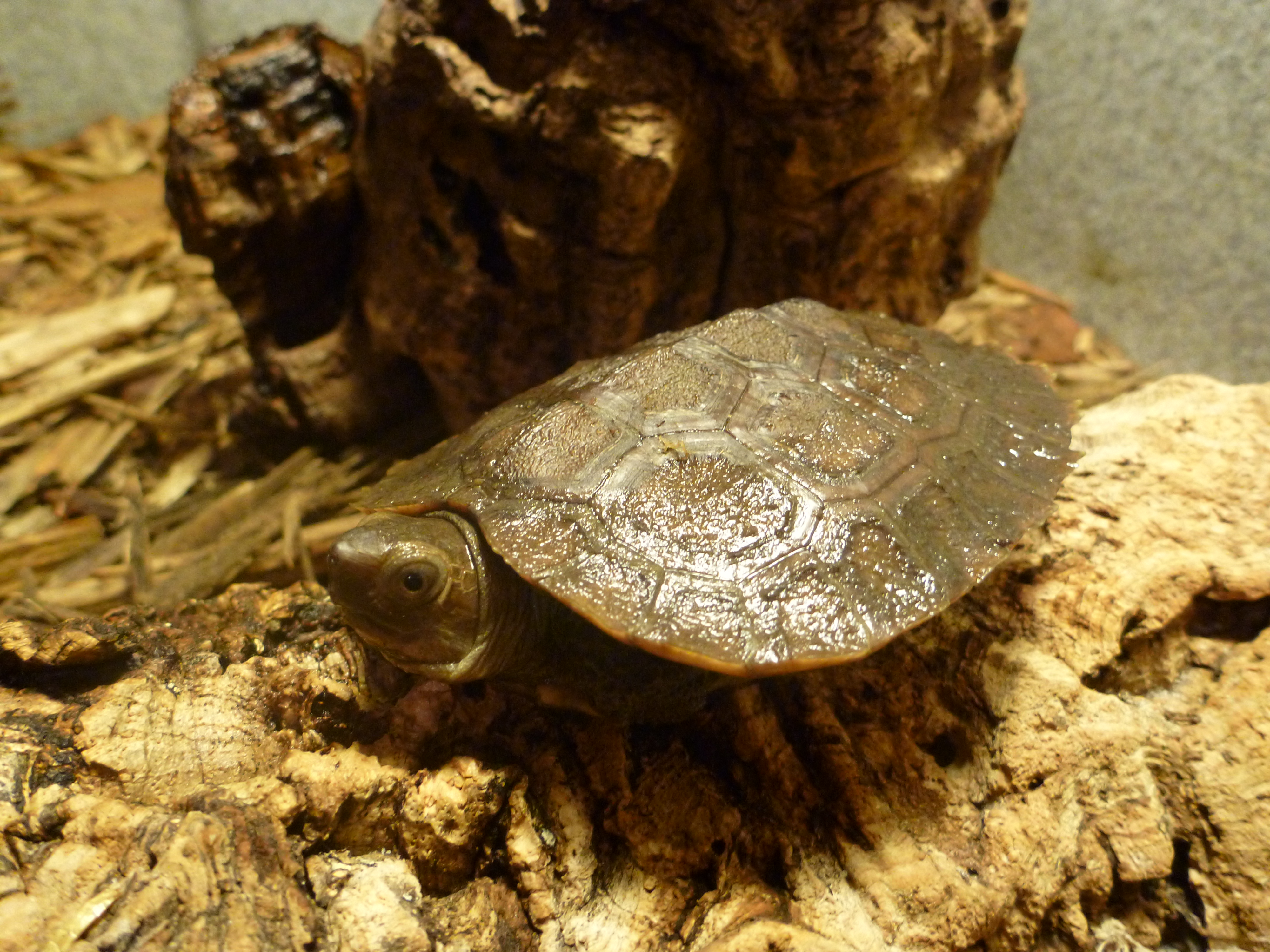Cautious Optimism for the Sulawesi Forest Turtle
by Charles Innis, VMD, DABVP 
 Management of a sustainable captive population of the critically endangered Sulawesi forest turtle (Leucocephalon yuwonoi) has been a priority of the TSA since its inception. A Taxon Management Plan was established in 2003 to develop a census of the known worldwide captive specimens of this species, monitor reproductive efforts, and facilitate breeding exchanges. Over the past nine years, approximately seventy founder specimens have been reported to the TMP, and we strongly suspect that there may be an additional one hundred specimens in captivity. Beginning as early as 1998, observations of captive females indicated that they generally produce only one (rarely two) eggs per clutch, and that they may lay several clutches per year. For several years, eggs were produced in several collections but appeared to be infertile. The first known hatching in captivity occurred in 2003 in the collection of the author. Since that time, slow but steady improvement has been seen in egg fertility, hatching, and rearing success at several private facilities and zoological institutions. To date, five hatchings have occurred in the author’s collection, “several” hatchings have occurred in the collection of a private breeder in California, one hatching occurred in the collection of Brian Duracka, two hatchings in the collection of TSA member Frank Passamonte, and one hatching in the collection of TSA member Dr. Greg Fleming.
Management of a sustainable captive population of the critically endangered Sulawesi forest turtle (Leucocephalon yuwonoi) has been a priority of the TSA since its inception. A Taxon Management Plan was established in 2003 to develop a census of the known worldwide captive specimens of this species, monitor reproductive efforts, and facilitate breeding exchanges. Over the past nine years, approximately seventy founder specimens have been reported to the TMP, and we strongly suspect that there may be an additional one hundred specimens in captivity. Beginning as early as 1998, observations of captive females indicated that they generally produce only one (rarely two) eggs per clutch, and that they may lay several clutches per year. For several years, eggs were produced in several collections but appeared to be infertile. The first known hatching in captivity occurred in 2003 in the collection of the author. Since that time, slow but steady improvement has been seen in egg fertility, hatching, and rearing success at several private facilities and zoological institutions. To date, five hatchings have occurred in the author’s collection, “several” hatchings have occurred in the collection of a private breeder in California, one hatching occurred in the collection of Brian Duracka, two hatchings in the collection of TSA member Frank Passamonte, and one hatching in the collection of TSA member Dr. Greg Fleming.
 Among zoos, the first and most sustained success has been achieved by the Münster Zoo, Germany, which reported five hatchings between 2006 and 2010. In the United States, a hatchling recently emerged at Zoo Atlanta, and most recently, a hatchling emerged at Denver Zoo on January 23, 2012. Hatchlings have generally been hardy, although several have died soon after birth and one died at five years of age. At this time, we are aware of at least twelve surviving captive bred juveniles. To date, five of these specimens have been relocated among TSA partners for long-term rearing. We hope to successfully raise these to adulthood, and eventually making genetically sound breeding recommendations for these individuals.
Among zoos, the first and most sustained success has been achieved by the Münster Zoo, Germany, which reported five hatchings between 2006 and 2010. In the United States, a hatchling recently emerged at Zoo Atlanta, and most recently, a hatchling emerged at Denver Zoo on January 23, 2012. Hatchlings have generally been hardy, although several have died soon after birth and one died at five years of age. At this time, we are aware of at least twelve surviving captive bred juveniles. To date, five of these specimens have been relocated among TSA partners for long-term rearing. We hope to successfully raise these to adulthood, and eventually making genetically sound breeding recommendations for these individuals.
 Despite these successes, the number of hatchings is still relatively low compared to the number of eggs produced, with many eggs remaining unfertilized, and many suffering embryonic death prior to hatching. In addition, many captive females are simply not producing eggs on a regular basis, and a disproportionate number of captive bred individuals have come from few females. Observations suggest that it may take many years for wild caught specimens to acclimate to captivity and begin successful reproduction. Ongoing research on the reproductive physiology of this species at Zoo Atlanta may prove insightful. Given that many hundreds of adult Leucocephalon have been removed from their native habitat over the past fifteen years, and the high mortality rate for this species in the international live animal trade, we are far from securing this species from ongoing threats. Nonetheless, the increasing success of the captive breeding program provides modest optimism for the future, and demonstrates the important work of the TSA and its partners.
Despite these successes, the number of hatchings is still relatively low compared to the number of eggs produced, with many eggs remaining unfertilized, and many suffering embryonic death prior to hatching. In addition, many captive females are simply not producing eggs on a regular basis, and a disproportionate number of captive bred individuals have come from few females. Observations suggest that it may take many years for wild caught specimens to acclimate to captivity and begin successful reproduction. Ongoing research on the reproductive physiology of this species at Zoo Atlanta may prove insightful. Given that many hundreds of adult Leucocephalon have been removed from their native habitat over the past fifteen years, and the high mortality rate for this species in the international live animal trade, we are far from securing this species from ongoing threats. Nonetheless, the increasing success of the captive breeding program provides modest optimism for the future, and demonstrates the important work of the TSA and its partners.
